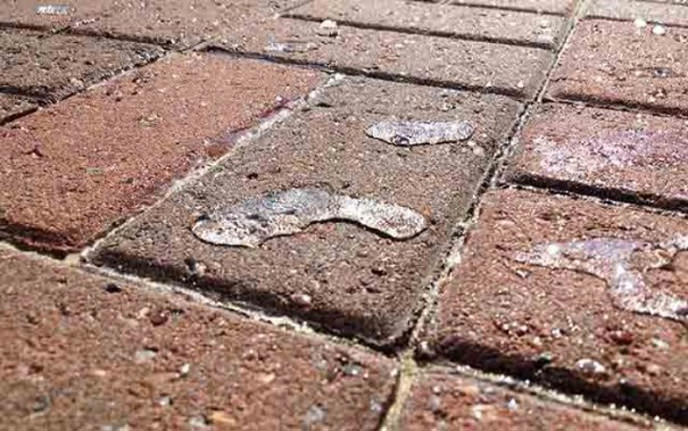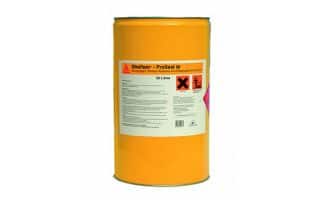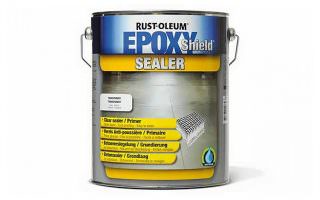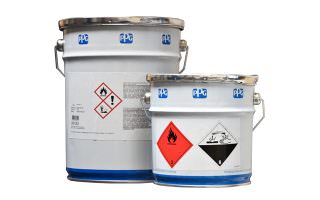During recent trips to both Paris and Berlin, I noticed how a lot of the high-end boutiques and restaurants had worn ‘’patina’’ finish concrete floors or bare power floated concrete floors. Discussing this with my fiancée who works in design, she brought to my attention that this look is very much in vogue at present as is a lot of industrial look interior design. On closer inspection I noticed with my trained eye that lots of these floors had been left unsealed leaving them vulnerable to damage and staining. So, upon return, I set myself the task of writing a blog on how to go about sealing, painting and protecting concrete floors, increasing the longevity of the floor.
Benefits of Painting or Sealing a Concrete Floor
Sealing or painting a concrete floor has many benefits. The first benefit being reduced dust. As tough and durable as concrete is, it is still susceptible to wear and tear. This is as it is subject to traffic which causes the surface to breakdown and become a dust. Applying a concrete floor paint or clear floor sealer such as Sika Sikafloor Proseal W will impregnate and seal the floor surface and prevent dusts from occurring. Sika Sikafloor Proseal will provide a clear non-yellowing finish which is highly impact and abrasion resistant. Another advantage of Sika Sikafloor Proseal W is that it can be applied to both power floated and fresh concrete floors.
Stain Resistance
Sealing or painting a concrete floor will increase its resistance to staining. Concrete is porous by nature, meaning moisture can be absorbed in the surface. Due to its porosity it can be susceptible to staining from liquid such as oils and fats. An excellent product that is very easy to apply (even for DIY application), for protecting and waterproofing concrete floors or exterior paving, is Centrecoat All Surface Protector, which I look at in more detail further down the page.
Surface Protection
BBA approved and clear once applied, Centrecoat All Surface Protector works by being absorbed into the surface to provide a hydrophobic surface resistance to water, oils, chemical and even chewing gum sticking to the surface. This product is microporous so water can escape from the concrete as a vapour, but no water can be absorbed back in. All Surface Protector is not just limited to concrete, it can also be applied to brick walls, old roof tiles, paths and paving, granite, stone, brick, sandstone, limestone, travertine plus many more.

High Level of Protection
Concrete floors can be subject to lots of impact and abrasion caused by items being dragged or dropped on the surface. It even allows the floor to be trafficked in high heel shoes can cause damage. Painting the concrete with a hard wearing floor paint will protect against this type of wear and damage. An excellent paint for this would be PPG SigmaCover 2, offering an impact, chemical and abrasion resistant finish that will also withstand intense cleaning.
Types of concrete floors
Power Floated
The most common type of concrete floor we encounter is known as a ‘’Power floated concrete floor’’. A power floated floor is polished with a machine before the concrete is cured. It which produces a very smooth, dense and glossy hard-wearing surface. Generally, if you are looking to seal a power floated floor you will need to etch or sand blast the surface prior to sealing or painting.
Screeded
Screeded floors are a common type of concrete floor applied on top of the pored concrete slab. They generally have a textured almost rough unpolished surface. This is as they have been hand finished with a wooden or plastic float. This type of concrete floor tends to have more porosity than a power floated floor as the concrete is far more open. It is still recommended that newly laid screeds are abraded to remove the laitance (salts) once cured to improve adhesion of concrete floor paints and floor sealers. However, some sealers, such as Sika Sikafloor Proseal W, can be applied directly to power floated finish and fresh concrete floors.
How to prepare a concrete floor for painting or sealing
Firstly, you will need to ensure the concrete floor has fully cured before coating or sealing. The rule of thumb for curing times is to allow 1 months drying for a 1 inch thickness of slab. Or a moisture content of around 9%. If the concrete is power floated, newly laid or has poor porosity, it is recommended the surface is abraded or etched to remove laitance and open the concrete pores. The quickest cleanest and best way to achieve this is to have the floor blast tracked or sand blasted.
Blast tracking is generally undertaken by trained contractors with specialist equipment. The process involves the use of a specialist machine. It fires or ‘blasts’ an aggregate at the surface removing a small layer. You could alternatively use an acid etching solution to etch the surface. Be mindful, you need to thoroughly rinse away the acid etching solution with clean water once it has etched the surface, the etch will stop fizzing and or bubbling when it has completed it’s reaction. Be sure to allow the floor to fully dry before coating or sealing with floor paint or floor sealers. The third and final step would be to clean the floor, ensuring the floor is free from any dirt, loose particles or contamination such as grease and oils.
How to seal or paint a concrete floor
As I previously mentioned, the painted, patina and unpainted power floated floor look is very in vogue at the moment. I noticed that most of the high-end boutiques I visited in Paris and Berlin had one of these types of finish on their concrete floors. Following this, I will be looking at how to maintain and protect this worn or ‘’patina’’ finish. I will also discuss how to protect and seal or paint a bare concrete floor.
When it comes to the choice of paints and concrete sealers we can use to preserve this finish, the choice on offer at Promain is vast. Below I will detail the surface preparation required and method of application for our go to sealers and concrete floor coatings.
Sika Sikafloor Proseal W

Sikafloor Proseal W is a one-part, water dispersed, acrylic emulsion, designed to cure, harden, and seal fresh or hardened concrete. Proseal W is also hard-wearing and impact resistant, ideal for sealing concrete floors subjected to high traffic. Sika is a global brand that is trusted by architects and contractors alike. They specialise in concrete products and have a wealth of knowledge and products for concrete floors.
Before the applying Sika Proseal the floor will need to be prepared. In the case of old concrete floors you must ensure the surface is in sound condition. It is recommend that the floor is prepared using either high pressure jet washing or blast tracking. Ensure all dust, lost material and contamination is completely removed and the surface is dry. If applying to fresh concrete, the surface must be free of surface water. It must be of sufficient strength to withstand finishing operations. The floor must be prepared by suitable power or manual floating/tamping techniques.
Following the above surface preparation, apply a coat of Sika Sikafloor Proseal W using brush, roller or low pressure spray equipment. Allow the first coat to cure until tack free. Apply a second coat in the same way as the first. For best result and optimum performance it is recommended that 2 coats are applied.
After completing the application of Sika Sikafloor Proseal W, allow the floor to cure. This should be for a minimum of 16 hours before returning to service.
Rustoleum 4900 Polycoat 2K
Rustoleum 4900 Polycoat 2K is a versatile varnish/sealer that is available in both gloss and matt finishes. This varnish can also be used on walls as an anti-graffiti coating and also on previous coated floors.
To seal and protect a worn or patina effect, bare or painted floor we first need to prepare the surface for coating with Rustoleum 4900 Polycoat 2K. The first step in the process would be to thoroughly clean the floor. You will need to ensure the surface to be coated is clean, dry, sound and free from wax, oil or any other contamination. The next step would be lightly sand any area of paint on the floor. This would just be to take the gloss off the surface and produce a key for the 4900 to adhere to. If any of the paint is peeling and flaking, this will need to be removed.
If any areas of bare concrete has laitance present or has a power floated finish, it is recommended these areas are abraded to open the pores and remove laitance.
Rustoleum 4900 is a 2 pack product, meaning it is supplied in 2 components, a base and a hardener. They need to be combined before application in order to cure. The components are supplied pre-measured in the correct ratio. The best way to mix them together is to use a power drill and paddle mix on a low speed setting. Ensure you mix for a minimum of 3 minutes. Many coatings require an induction time, if so, allow to stand for 5 minutes, or the recommended time on the manufacturers product data sheet, before applying.
Application
Using a roller apply a coat that that has been diluted by 10% in volume with clean water, allow this coat to then cure for a minimum of 4 hours at 20°C. After allowing the first coat to cure, apply 2 additional undiluted coats. Allow a minimum of 4 hours at 20°C between coats. Allow the coating to then cure for 3 days before returning to service.
Rustoleum EpoxyShield Clear Sealer Primer 5220

Rustoleum EpoxyShield Clear Sealer Primer 5220 is a single component water based floor sealer which can be applied to bare suitably prepared concrete floors. EpoxyShield 5220 reduces dust production, protects the floor against liquid, chemicals and solvent spillage and simplifies the cleaning process. This sealer can also be used as a primer for EpoxyShield 5200 Ultra floor paint.
Before rushing ahead and applying 5220 you first need to prepare the floor for sealing. As previously described ensure the floor is fully cured. If the concrete has a power floated finish or any laitance, remove this by either blast tracking or acid etching. Thoroughly clean the floor removing any loose particles, dirt or contamination and ensure the floor is completely dry.
Once suitably prepared, using a roller, apply a coat of EpoxyShield 5220 to the surface. Allow to cure for 6 hours at 20°C. Once the first coat has cured apply a second coat in the same way. Allow to cure for at least 8-12 at 20°C before allowing foot traffic on to the surface.
Centrecoat All Surface Protector
Centrecoat All Surface Protector is used to seal the surface of concrete floors making them waterproof without changing the appearance of the surface. Another advantage of Centrecoat All surface protector is it will protect the surface from soiling or staining. It even allows for the easy removal of chewing gum. All surface protector can even be used on dense polished concrete. All Surface Protector is not limited to concrete. It can also be used both internally and externally on clay tiles, granite, stone, brick, sandstone, limestone, travertine, concrete, porcelain, lime mortar, plus many more.
Prepare the floor by thoroughly cleaning removing all dirt, loose particles and any contamination. Following the cleaning ensure the concrete is completely dry ideally with a moisture content of 5%. Then using either a brush, roller or low pressure sprayer apply a coat to the surface. Apply a second coat before the first coat has dried in a ‘’wet on wet’’ application. Allow the surface to fully dry before allowing traffic back onto the surface.
PPG SigmaCover 2

PPG SigmaCover 2 is an extremely hard-wearing and impact resistant paint for concrete but can also be used on steel as well. Sigmacover 2 is formulated as a 2 pack epoxy. However has an advantage over many epoxy paints as it has the ability to still cure at temperatures below 5°C.
Prepare the surface by thoroughly cleaning ensure any contamination, dirt or loose particles are removed. If the concrete is power floated or has laitance present this will need to be removed. This is done by ideally via blast tracking the surface (see our video on Blast Tracking). Following the above preparation, ensure the floor is completely dry before applying any paint.
Sigmacover 2 is a two pack paint, meaning it is supplied in 2 components. They will need to be mixed together prior to application. The 2 components of the coating come supplied in pre measured ratios. You will need to mix them by using a power drill and paddle mix on a low speed setting. Mix for at least 3 minutes. Please bear in mind once mixed you have a pot life. During this time the paint can be used within 2 hours in which to apply the paint.
Once mixed use a roller to apply a coat to the floor. Leave to cure for a minimum of 6 hours at 20°C. Once the first coat has cured, mix up the second batch of paint in the same as the first. Then again using a roller apply an even coat. Once completed allow the paint to cure for at least 3 days before allowing foot traffic.
Conclusion
If you have a concrete floor you would like to seal or paint, why not call Promain‘s technical team on 01462 421 333 for expert advice.

